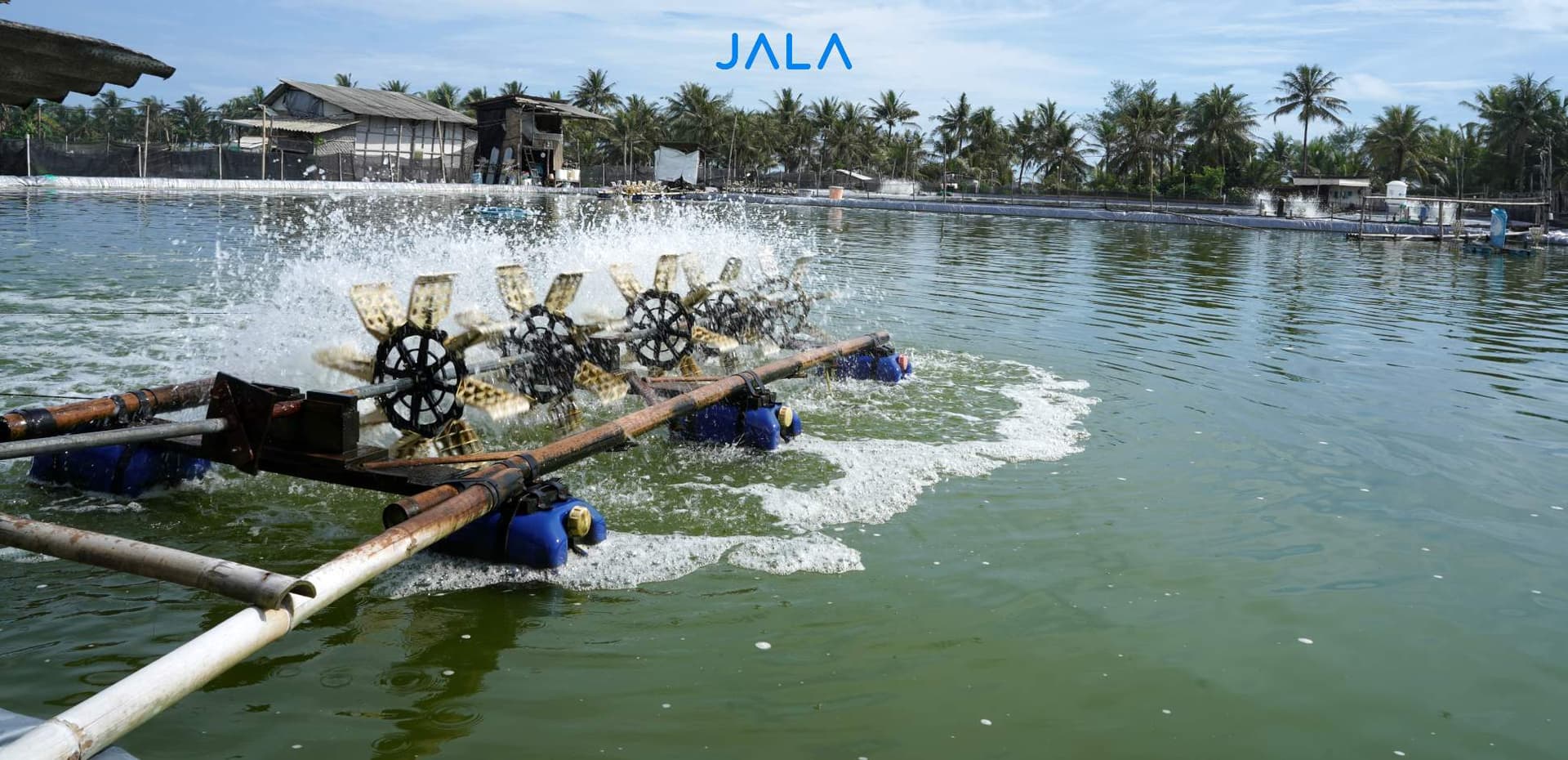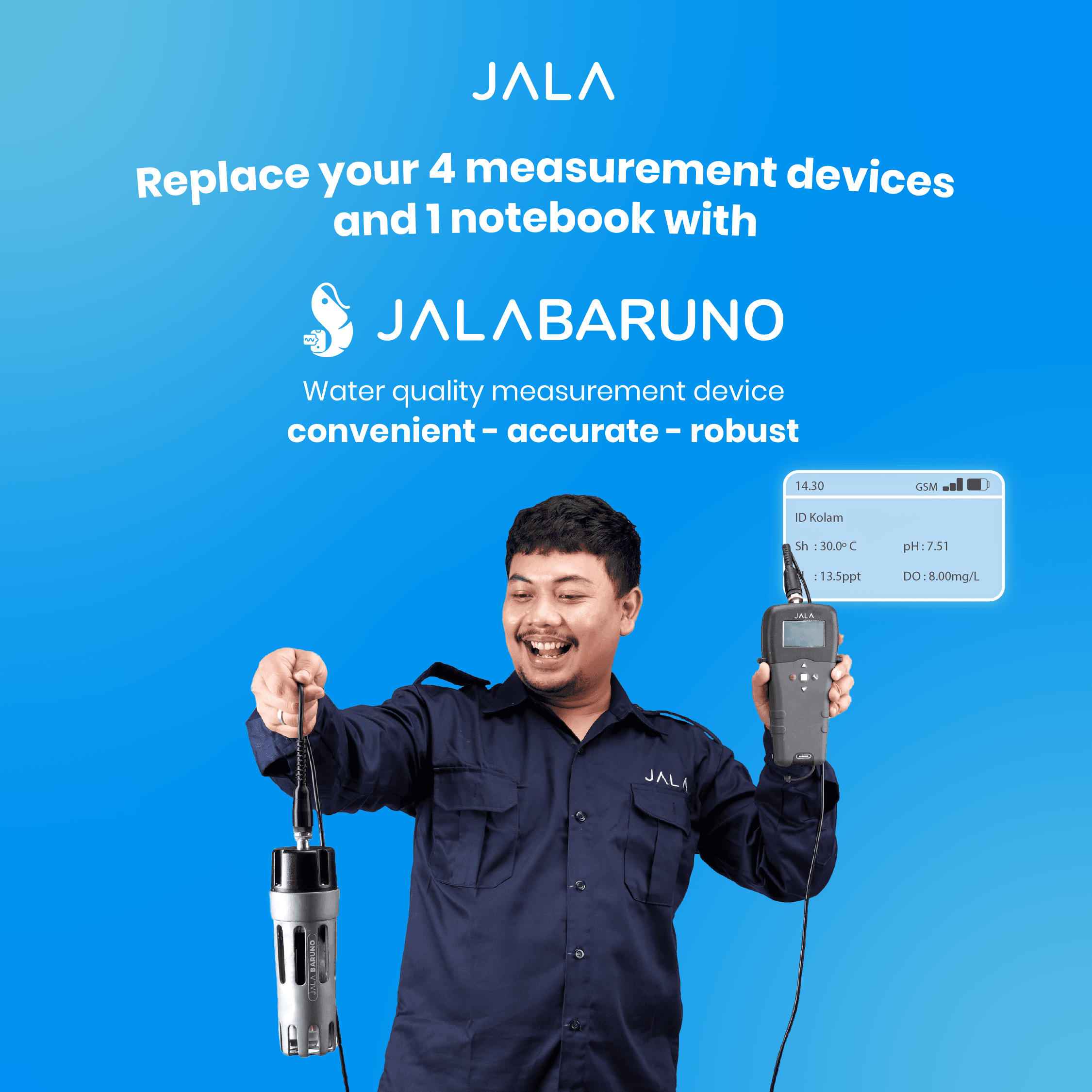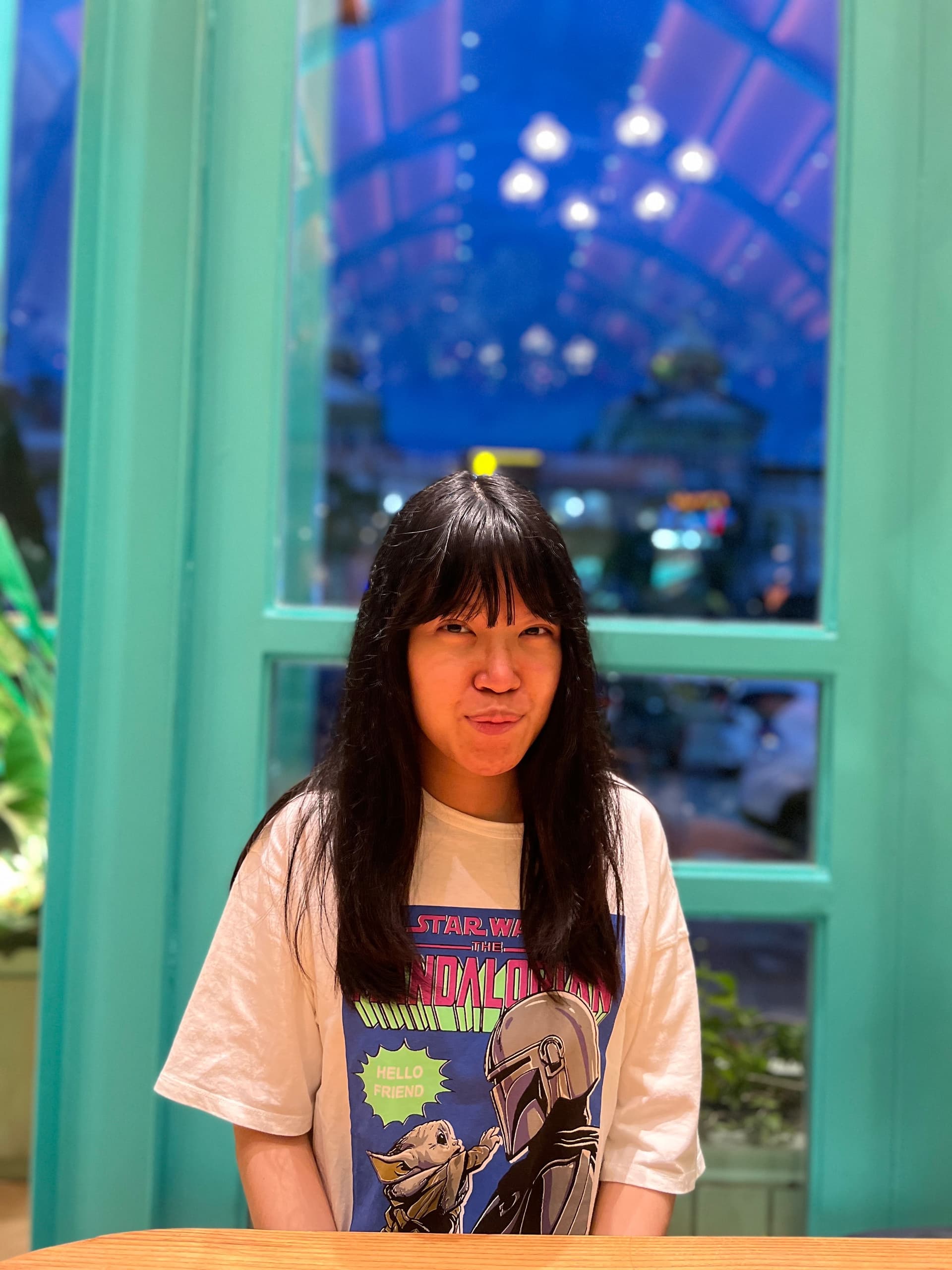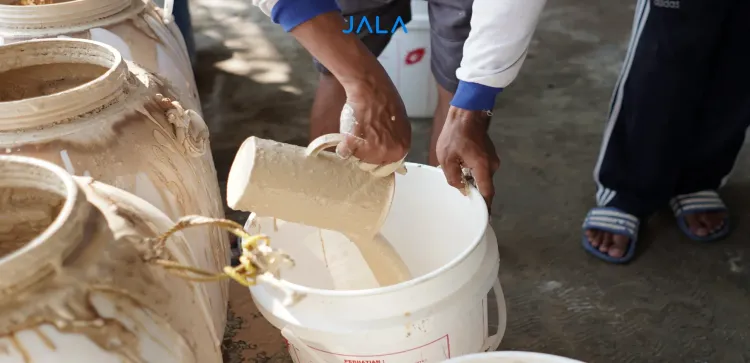
Paddlewheels are one of the essential tools in shrimp ponds. Shrimp pond paddlewheels are necessary because one of the basic needs for shrimp to survive is an adequate supply of oxygen. In shrimp ponds with semi-intensive, intensive, or super-intensive systems with high stocking densities, achieving sufficient oxygen levels is challenging without the use of paddlewheels.
The role of oxygen for shrimp
Oxygen plays a crucial role in the respiration and metabolic reactions of organisms in pond ecosystems, not only for shrimp, but also plankton and bacteria. Oxygen in water exists in the form of dissolved oxygen (DO). The ideal DO level for shrimp ponds is not less than 4 ppm.
Hypoxia conditions, where DO falls below 2 ppm, can lead to decreased growth, lower survival rates (SR), disrupted feeding, irregular molting, impaired osmoregulation capacity, and weakened immune defenses, making shrimp more susceptible to diseases. One of the signs of low DO is shrimp swimming to the water's surface.
Lack of DO in aquatic ecosystems, especially below 3 ppm, can also trigger the production of hydrogen sulfide (H2S) at the bottom of the pond. H2S is harmful to shrimp as it inhibits the respiratory processes. The combination of low pH, low oxygen, and low temperature makes hydrogen sulfide even more harmful. Optimizing aeration and water circulation helps prevent the formation of dead zones with no flow and oxygen deficiency at the pond bottom.
Maintaining DO levels with paddlewheels
The function of shrimp farm paddlewheels is to create water movement that generates strong water splashes. This leads to the formation of air bubbles in water with a mechanical aeration system. This way, pond paddlewheels help increase DO concentration and reduce excess CO2.
Shrimp pond paddlewheels play a vital role as a source of DO, especially during nighttime when there is no photosynthesis. Phytoplanktons, which naturally produce oxygen, also require oxygen for respiration at night. Additionally, paddlewheels prevent stratification of water quality variables (DO, pH, plankton, and salinity), control sediment deposition, maximize feeding areas, and reduce dead zones. The required oxygen increases as shrimp biomass increases. Paddlewheels also aid in improving water quality by stimulating the stability of phytoplankton growth.
Considerations before installing a paddlewheel
If you plan to install a paddlewheel in your shrimp pond, pay attention to its location. It should be positioned to gather sediment or mud precisely at the center of the pond bottom. The paddlewheel's requirement can be predicted based on the amount of feed per day or the shrimp biomass in the pond.
Read more: High-Quality Feed for Shrimp Growth
However, it is important to know that the rotation of the paddlewheel should create water currents that evenly distribute the pond's water quality vertically and horizontally. The presence of a paddlewheel is essential for ensuring an adequate oxygen supply.
What’s next after installing a paddlewheel: regular DO monitoring
Maintaining DO in the pond is not enough by just installing a paddlewheel. Make sure to monitor DO concentration daily. Measurements can be performed every morning at 5:00-6:00 am and in the afternoon at 12:00-2:00 pm. This is because 5:00-6:00 am is the time when DO reaches its lowest point, and 12:00-2:00 pm is when DO reaches its highest point due to high photosynthesis activity from phytoplanktons.
The next question is, how do you regularly monitor DO in the pond? Try Baruno, an accurate, fast, and precise solution for water quality measurement! Baruno allows you to measure DO as well as other water quality parameters simultaneously, such as temperature, pH, and salinity. Moreover, the data measured by Baruno is stored in the JALA cloud and can be accessed from the JALA App anytime and anywhere. Baruno is also protected by a waterproof, dustproof, and sandproof casing, making it suitable for use in pond environments.

Oxygen is a fundamental requirement that should not be overlooked in shrimp farming. With sufficient DO, aquaculture can run sustainably and productively. Ensure you supply enough DO to the pond with paddlewheels and regularly monitor its concentration with Baruno!





